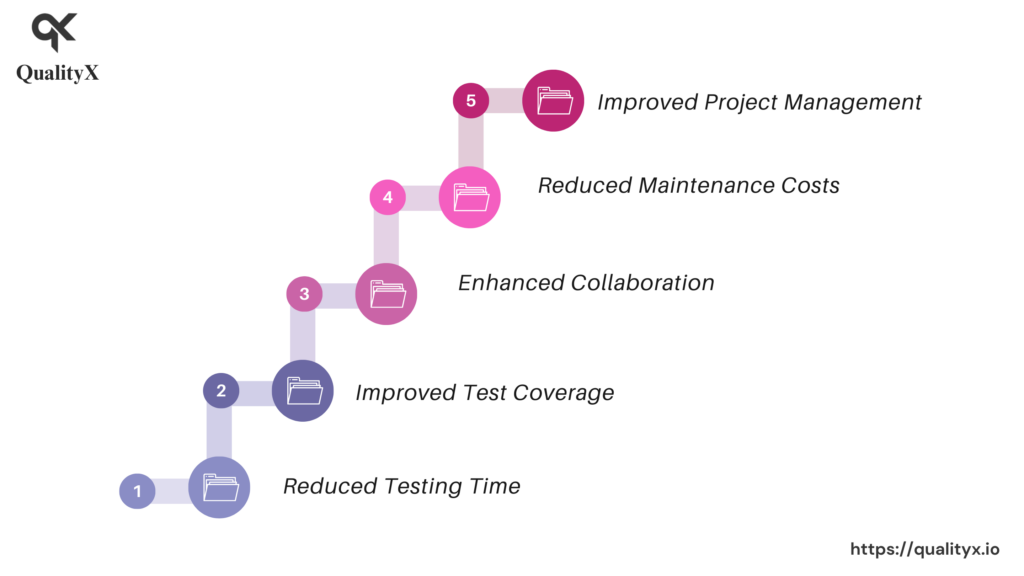Introduction
- In the dynamic realm of software development, testing stands as a critical pillar, guaranteeing the quality, stability, and overall user experience of digital products.
- While the spotlight often shines on the execution of tests themselves, an often-overlooked aspect holds immense value: documentation.
- Documentation, the systematic recording of information related to testing, is not merely an administrative task; it’s an integral part of the testing process, providing a roadmap for testers, stakeholders, and future project members.
- By effectively documenting the testing journey, teams can reap a multitude of benefits that contribute to the overall success of software projects.
The Significance of Documentation: Unveiling Its Impact
Documenting testing procedures is not a mere formality; it’s an investment in the quality and long-term success of software projects. By prioritizing clear, comprehensive, and up-to-date documentation, testing teams can not only ensure the quality of their work but also create a valuable resource that benefits the entire project team and future endeavors.
- Clarity and Consistency: Documentation fosters a shared understanding of the testing process, ensuring that everyone involved is on the same page. This clarity promotes consistency in testing efforts, reducing the likelihood of errors and inconsistencies.
- Knowledge Transfer and Retention: Documentation serves as a repository of knowledge, capturing the collective wisdom of the testing team. It allows new team members to quickly grasp the testing strategy, objectives, and procedures, reducing the time it takes to get up to speed.
- Reproducibility and Traceability: Well-documented testing procedures ensure that tests can be replicated consistently, allowing for more accurate comparisons and trend analysis. This traceability helps identify areas that require improvement and track progress over time.
- Communication and Collaboration: Documentation facilitates effective communication among testers, developers, and project stakeholders. It provides a clear overview of the testing process, enabling informed decision-making and collaboration.
- Future-Proofing: Documentation ensures that the knowledge and insights gained through testing are not lost over time. It serves as a valuable resource for future projects, preventing the need to reinvent the wheel.
Embracing Best Practices: Elevating Documentation Effectiveness
While the importance of documentation is undeniable, it’s crucial to approach it effectively to reap its full benefits. Here are some best practices for creating and maintaining effective testing documentation:
- Early Adoption and Continuous Updates: Begin documenting early in the testing process and keep it updated throughout the project lifecycle. This ensures that the documentation remains relevant and reflects the current state of testing.
- Clarity and Simplicity: Use clear and concise language that is easy to understand for both technical and non-technical audiences. This ensures that the documentation is accessible to a wider audience and promotes better understanding among all stakeholders.
- Standardized Format: Establish a consistent format for documenting test cases, procedures, and results. This improves readability, maintainability, and promotes consistency across the testing team.
- Visual Enhancements: Incorporate diagrams, screenshots, and flowcharts to enhance understanding and illustrate complex procedures. Visual aids can help break down complex information into easier-to-grasp concepts, making the documentation more engaging and informative.
- Centralized Repository: Maintain a single source of truth for testing documentation. This ensures that everyone is referencing the same up-to-date information and prevents confusion or discrepancies.
- Regular Reviews and Updates: Periodically review and update documentation to reflect changes in the project, testing strategies, or tools. This ensures that the documentation remains relevant and valuable over time.
Embracing Testing Documentation: A Journey of Benefits

Benefits of Testing Documentation
By embracing effective testing documentation practices, teams can unlock a multitude of benefits that elevate their testing efforts:
- Reduced Testing Time: Clear and concise documentation reduces the time spent re-learning or clarifying test procedures, leading to faster testing cycles.
- Improved Test Coverage: Comprehensive documentation ensures that all aspects of the software are thoroughly tested, reducing the risk of undetected bugs.
- Enhanced Collaboration: Documentation facilitates effective communication and collaboration among testers, developers, and stakeholders, leading to better alignment and faster issue resolution.
- Reduced Maintenance Costs: Well-documented testing procedures make it easier to maintain and update tests in response to changing requirements or codebase modifications.
- Improved Project Management: Documentation provides valuable insights into testing progress, resource utilization, and potential risks, enabling better project planning and decision-making.
key testing documents include:
- Test case: A test case is a detailed specification of a single test, providing a step-by-step guide for executing a test. It includes the preconditions, test steps, expected results, and actual results, allowing testers to systematically verify the behavior of the system.
- Test plan: A test plan is a comprehensive document that outlines the overall testing strategy for a project. It defines the scope, objectives, resources, schedule, and risk management plan for the testing effort.
- Requirement traceability matrix (RTM): A requirement traceability matrix (RTM) is a table that maps requirements to test cases, ensuring that all requirements are adequately covered by the testing effort. It helps track the relationship between requirements and their corresponding tests, ensuring that the system meets all specified requirements.
- Test strategy: A test strategy defines the overall approach to testing for a project. It considers the project’s goals, risks, and constraints to determine the most effective testing methodologies and tools to be used.
- Test data: Test data is a set of input values or conditions used to execute test cases. It is carefully selected to represent real-world scenarios and ensure that the system is tested under various conditions.
- Bug report: A bug report is a formal documentation of a software defect or issue. It provides a detailed description of the problem, including steps to reproduce, severity level, and any relevant screenshots or attachments.
- Test execution report: A test execution report is a record of the results of a test execution cycle. It summarizes the overall pass/fail status of the tests, identifies any defects or issues encountered, and provides metrics on testing progress and coverage.
Conclusion: Documentation – The Unsung Hero of Software Quality
- Documentation, often overlooked in the buzz of testing execution, plays a pivotal role in ensuring software quality and project success.
- By prioritizing clear, consistent, and up-to-date documentation, testing teams can harness its power to enhance their testing efforts, foster collaboration, and deliver exceptional software products.
aiTest: A Closer Look
aiTest an all-in-one testing platform. This platform is designed to conduct comprehensive testing on your applications concurrently. It supports cross-browser and browser version testing, as well as functional and performance tests integrated with Analytics. Additionally, the platform incorporates automation features, including an LLM for effortless generation and testing of machine learning models and generating test data for the same.One-stop solution for continuous testing, integrating seamlessly with CI/CD pipelines. With support for multiple languages and specialized testing for AI/ML services, aiTest empowers organizations to speed up their release cycles while ensuring quality and reliability.


